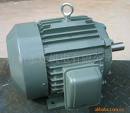The effect of voltage fluctuations, sags and unbalance on the operation of electrical equipment
Consequences of voltage fluctuations and dips in the electrical network
Fluctuations and voltage drops in the electrical network lead to the following consequences:
— fluctuations in the luminous flux of lighting devices (flicker effect);
— deterioration of the quality of television receivers;
— malfunction of the X-ray equipment;
— false operation of regulating devices and computers;
— disturbances in the operation of converters;
— fluctuations in the torque of the shaft of rotating machines, causing additional losses of electricity and increased wear of equipment, as well as disturbances in technological processes that require a stable speed of rotation.
 The degree of influence on the operation of the equipment is determined by the amplitude of oscillations and their frequency.
The degree of influence on the operation of the equipment is determined by the amplitude of oscillations and their frequency.
High power load fluctuations, for example rolling mills, cause fluctuations in the torque, active and reactive power of local power plant generators.
Fluctuations and voltage dips of more than 10% can cause gas discharge lamps to go out, which, depending on the type of lamp, may only re-ignite after a considerable period of time. With deep fluctuations and voltage drops (more than 15%), the contacts of the magnetic starters may drop, causing production disruptions.
 Swing fluctuations of 10-12% can cause damage to capacitors as well as rectifier valves.
Swing fluctuations of 10-12% can cause damage to capacitors as well as rectifier valves.
Sharp fluctuations in voltage have a negative impact on the dynamics of train movement. Overvoltages and surges caused by voltage fluctuations reduce the reliability of contactors and are dangerous in terms of tripping. For electric rolling stock, fluctuations of the order of 4-5% are dangerous.
Influence of voltage fluctuations and drops on the operation of electrical equipment
 Voltage fluctuations practically do not affect the quality of electric arc welding (due to the inertia of thermal processes in the weld metal), but they significantly affect the quality of spot welding.
Voltage fluctuations practically do not affect the quality of electric arc welding (due to the inertia of thermal processes in the weld metal), but they significantly affect the quality of spot welding.
The increase in electricity losses in intra-plant networks caused by voltage fluctuations with an amplitude of 3% does not exceed 2% of the initial value of losses.
In metallurgical plants, voltage fluctuations of more than 3% lead to a discrepancy in the operating speeds of the drives of continuous rolling mills, which reduces the quality (thickness stability) of the rolled strip.
In the production of chlorine and caustic soda, voltage fluctuations cause a sharp increase in anode wear and a decrease in productivity.
A voltage drop during the production of chemical fibers causes an equipment shutdown, which takes from 15 minutes in case of 10% equipment failure) to 24 hours in case of 100% equipment failure) to restart. Defective products make up from 2.2 to 800% of the tonnage of one technological cycle. The time for full recovery of the technological process reaches 3 days.
The influence of voltage fluctuations and drops on asynchronous electric motors
Voltage fluctuations and sags have a noticeable effect on low-power induction motors. This poses a danger to the textile, paper and other industries that place high demands on the stability of the rotation speed of electric drives. In particular, voltage fluctuations in man-made fiber factories lead to unstable rotation of the windings. As a result, the nylon threads either break or are obtained with uneven thickness.
The influence of voltage imbalance on the operation of electrical equipment
The imbalance of a three-phase system with voltage leads to the appearance of negative sequence currents, and in 4-wire networks, in addition, zero sequence currents.Negative sequence currents cause additional heating of rotating machines, the appearance of uncharacteristic harmonics during operation of multiphase converters and other phenomena.
 With a voltage imbalance of 2%, the service life of asynchronous motors is reduced by 10.8%, of synchronous motors — by 16.2%; transformers — by 4%; capacitors — by 20%. The equipment heats up due to the consumption of additional electricity, which reduces efficiency. wiring. The speed of rotation of asynchronous motors decreases slightly, shaft vibrations and noise increase.
With a voltage imbalance of 2%, the service life of asynchronous motors is reduced by 10.8%, of synchronous motors — by 16.2%; transformers — by 4%; capacitors — by 20%. The equipment heats up due to the consumption of additional electricity, which reduces efficiency. wiring. The speed of rotation of asynchronous motors decreases slightly, shaft vibrations and noise increase.
To avoid engine overheating, its load must be reduced. According to publication IEC 892, full motor load is only permitted with a voltage negative sequence factor of no more than 1%. At 2% the load should be reduced to 96%, at 3% to 90%, at 4% to 83% and at 5% to 76%.
If technological installations are equipped with protection against voltage imbalance, then at high levels of imbalance they can be switched off, which leads to technological failures (reduction in quality and insufficient supply of products, rejection).
However, the main effect of the voltage imbalance is the heating of the equipment, due to which the permissible values may be exceeded for some time, if at the following moments this is compensated by a lower level of imbalance. This provision refers to the change in unbalance within a time that does not exceed the warm-up time of the equipment.
Influence of voltage and frequency deviation on the performance of electrical equipment
Voltage deviations in the positive direction lead to a reduction in losses in networks, an increase in the performance of mechanisms driven by asynchronous motors), but energy consumption increases, the service life of equipment, especially incandescent lamps, is reduced.
A negative deviation from the rating leads to the opposite phenomena, except that the service life of the motors is also reduced. The optimum voltage of the motor (based on its service life) is not always equal to the rated voltage, but if it deviates from it, the service life is reduced.
Frequency deviations have even less effect on equipment life and energy lossesvoltage deviation.
The major component of damage from voltage and frequency deviations is determined by some reduction in equipment performance and is similar to damage from limitations imposed on the amount of energy used.
In most industries this decline is offset by an increase in machine hours or overtime. Experimentally, it can only be fixed on automatic lines with continuous production.
In some cases, lowering the voltage within acceptable limits is used to reduce power consumption, which is considered an energy saving measure.
